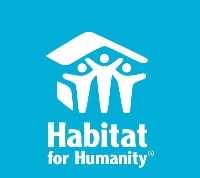FEMA and SBA Assistance Tops $105.3 Million for Michigan Storm Survivors
LANSING, Mich. – RealEstateRama – A little over one month since President Joe Biden declared a major disaster for the state of Michigan following the Aug. 24-26, 2023, severe storms, tornadoes and flooding, more than $105.3 million in federal assistance has been provided by FEMA and the U.S. Small Business Administration to support disaster recovery.
Homeowners and renters whose homes and property were damaged by the storms, and who still need to apply for federal assistance, have until April 8, 2024, to do so.
As of March 19, Michigan’s recovery assistance includes:
- More than $103.1 million in FEMA’s Individual and Households Program (IHP) grants awarded to eligible homeowners and renters in nine Michigan counties. These grants help pay for uninsured and underinsured losses and storm-related damage, including:
- More than $83.1 million in FEMA housing grants to help pay for home repair, home replacement and rental assistance for temporary housing.
- More than $19.9 million in Other Needs Assistance grants to help pay for personal property replacement and other serious storm-related needs—such as moving and storage fees, transportation, childcare, and medical and dental expenses.
- More than $2.2 million in long-term, low-interest disaster loans from the SBA for homeowners and renters to help repair, rebuild or replace disaster-damaged physical property and to cover economic injury for businesses of all sizes and non-profit organizations.
The nine Michigan counties designated for Individual Assistance in this disaster are: Eaton, Ingham, Ionia, Kent, Livingston, Macomb, Monroe, Oakland and Wayne.
The state and FEMA have staffed and operated 15 Disaster Recovery Centers in the nine designated counties that provide one-on-one assistance to survivors. The centers have tallied more than 1,270 visits by survivors.
Recovery specialists from FEMA, state and the U.S. Small Business Administration at the recovery centers provide information on available services, explain assistance programs, and help survivors complete or check the status of their applications for assistance. No appointment is necessary to visit a Disaster Recovery Center. Walk-ins are welcome. All centers are open 8 a.m. to 6:30 p.m. Monday through Saturday. All centers are closed Sundays.
To find locations of all open recovery centers, visit FEMA.gov/DRC. You may visit any center for assistance.
You don’t need to visit a recovery center to apply for FEMA assistance or to check on the status of your application. The easiest way to reach FEMA is to call the toll-free Helpline at 800-621-3362. Specialists are available 7 a.m. to 11 p.m. to help you apply, answer your questions and provide referrals to resources. Language translation is available. If you use a relay service such as video relay service (VRS), captioned telephone service or others, give FEMA your number for that service when you apply. You also may go online to DisasterAssistance.govor download the FEMA App.
- FEMA has sent Disaster Survivor Assistance (DSA) teams to storm-affected neighborhoods in every designated county. These teams travel door-to-door in hard-hit neighborhoods helping survivors apply for assistance. DSA teams visit homes, businesses, and nonprofit organizations to help residents apply for assistance, identify, and address immediate and emerging needs, and make referrals to other local, state, and voluntary agencies for additional support.
- These teams provide information on resources available from federal and state governments, nonprofit organizations, and the faith-based community to help address immediate needs.
- To date, DSA personnel have interacted with more than 8,860 survivors; and have helped more than 33,610 households apply for FEMA’s Individual Assistance program. They visited more than 930 businesses and 1,400 community locations. FEMA is working to remove barriers to assistance, ensuring all survivors have equal access to disaster aid and resources.
No one’s background or primary language is a barrier to receiving FEMA financial assistance. FEMA offers help in many languages available through our call centers to assist caseworkers and processing staff to provide customer service to non-English speaking applicants. Call the toll-free Helpline at 800-621-3362 between 7 a.m. and 11 p.m.
For more information about the disaster recovery operation in Michigan, visit www.fema.gov/disaster/4757.
###
FEMA does not treat people differently because of race, color, national origin, sex, sexual orientation, religion, age, disability, English proficiency, or economic status. FEMA provides free aids and services to people to help them communicate with us and understand FEMA programs:
- Information available in Braille, large print, or audio.
- Information available in accessible electronic formats on FEMA’s website.
- Qualified sign language interpreters.
- Qualified multilingual interpreters.
- Information written in other languages.
If you need assistance to access a FEMA program or service or a program or service funded by FEMA or want to report a concern or complaint of discrimination, please contact FEMA at (833) 285-7448 [Press 1 for English, 2 for Spanish, 3 for the Language Line] or email ">.















